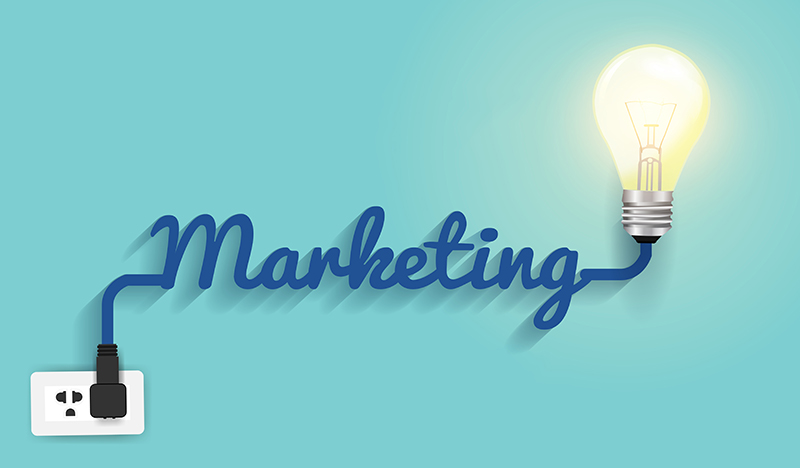Though the idea sounds nice, B2B marketers simply can’t rely on a single piece of software to capture end-to-end marketing processes. The marketing technology (MarTech) landscape is exploding with options, none of which fill every use case in the B2B marketing organization. Such use cases are only expanding. This is why Chief MarTec reports that within the last year, the landscape grew approximately 40%, to a total of 5,381 solutions (from 4,891 unique companies).
To help boil this MarTech chaos down to something that’s more coherent to marketers in need of guidance, here are four essential parts of an effective integrated marketing system that should be covered.
The 4 Essential Parts of an Integrated Marketing System
1. Top-of-the-Funnel Systems
At the top of the funnel, marketing systems and technologies serve the purpose of generating awareness and converting awareness into interest (i.e., contact info and leads). At this stage of the sales cycle, B2B decision-makers begin researching potential solutions to pain points.
B2B prospects may encounter branded solutions based on marketing such as events, advertising, trade shows, content marketing, webinars, direct mail, social media, search, media and other types of demand generation activities. Forrester describes the technology in this category as “systems of engagement,” separating ToFu MarTech into three distinct categories by customer journey:
Customer service, easier done than said.Zoho Desk is the industry’s first context-aware help desk software. With powerful reporting features, intuitive UI, effective automations and integrations, you can transform your customer service and turn it into your competitive advantage. Try the award-winning software for free.
- Digital
- Mobile
- Offline
Increasingly, B2B marketers are relying on omnichannel marketing strategies and an increasing number of tactics to generate awareness at the top of the funnel. Depending on the organization, this can introduce the need for a number of solutions, technologies and partnerships. These technologies can include, but aren’t limited to:
- Website and Content Management Systems
- Search Engine Optimization & Social Media Solutions
- Predictive/Intent Data Solutions
- Programmatic Display and Retargeting Advertising Platforms
- Event Promotion and Event Data Management Tech
- Direct Mail/Tactile Marketing Technologies
- Conversion Optimization Technologies
- Demand Orchestration Software Solutions …to integrate and efficiently manage much of the above
2. Middle-of-the-Funnel Systems
When a prospect has been converted into a lead, they enter the middle of the funnel, loosely termed the consideration stage. During this phase, the lead learns more about the brand and its products. B2B marketers rely on a variety of channels and methodologies to educate leads, nurture budding relationships and introduce points of competitive differentiation.
Forrester aligns this stage with “orchestration” in their MarTech analysis, pointing to technologies which can automate lead nurturing and scoring, such as marketing automation platforms (MAPs). While MAPs are likely to play an integral role in MoFu MarTech, other systems can include:
- Programmatic Display and Retargeting Advertising
- Technologies for One-to-One Content Experiences
- Website Personalization Software
- Demand Orchestration Software
- Direct Mail
- Event and Event Data Management Softwares
3. Bottom-of-the-Funnel Systems
In a full-funnel, demand generation environment, marketers continue to play an active role and work closely with the sales team to support the SQLs journey through the funnel. BoFu MarTech can commonly include systems for sales enablement and customer relationship management, but it may also include solutions which support marketing-sales alignment, content delivery, personalized digital experiences and more:
- Customer Relationship Management (CRM) software
- Sales Enablement Platforms
- Website Personalization
- Marketing Automation Platforms
4. Full-Circle Insights
In addition to the technologies used to generate contacts and convert them to leads and opportunities, B2B marketing organizations have a need for full-funnel intelligence. Forrester categorizes this type of MarTech as “systems of insight.”
Increasingly, the success of B2B marketing organizations is measured in comprehensive success metrics such as marketing-influenced sales pipeline or even revenue, instead of volume-based metrics such as total leads generated. This has made full-funnel insight crucial, as marketers face pressure to optimize campaigns in-flight across complex, multi-channel marketing campaigns on an ongoing basis.
The most effective systems of insight don’t just offer in-depth visibility into single channels or sources. They allow marketers to understand performance in terms of metrics that matter, such as pipeline contribution from various sources, channels and content, and in real-time. With true, full-funnel visibility, marketers can achieve transparency throughout the sales funnel and the ability to continually optimize.
Examples of technologies in this category can include:
- Program Performance Measurement & Optimization Solutions
- Content Intelligence Tools
- Behavioral Analytics
- Journey Analytics
- Attribution Technologies
4 Benefits of Integrated Marketing Systems
While your B2B marketing organization can benefit immensely from integrated marketing systems in terms of customer relationships and loyalty, there are also significant operational benefits in store when you achieve true, full-funnel integration of your marketing technologies and software.
Fluid, Higher Quality Data
B2B marketing organizations can achieve superior data quality and real-time access, including better lead velocity, when manual processes are replaced with automated tools and systems which work together seamlessly.
Superior Transparency
When multichannel data is combined across systems, organizations can achieve the ability to measure full-funnel results with closed-loop reporting to optimize campaigns in-flight.
Real-Time Performance Enhancement
Marketers no longer have to wait for campaigns to conclude before analyzing channels, tactics and strategies. With visibility across systems and strategies, marketers can adopt a real-time approach to improvement.
Better Resource Allocation
End-to-end integration can save the average B2B organization tens of hours each week on manual tasks such as lead data processing – such as lead aggregation, validation, data deduplication and routing. This can free talented demand marketers to focus on strategy, process optimization, content creation, continual education and other improvement-oriented tasks.
Achieving the Benefits of an Integrated Marketing System
Not all tools can work at every level of the funnel, but data needs to flow cleanly through the entire tech stack to truly be integrated.
As B2B marketers consider new technology investments, prospective new tools and solutions should be weighed against the increasingly common saying, “integrate it or reject it.” If a tool or platform can’t be integrated seamlessly into the existing marketing technology ecosystem, it may not deliver the value promised.
Within the new app economy, integration between apps is easier than ever. Using solutions such as Zapier to layer on integration can be sufficient. But, marketers need to commit to periodic testing these third-party integrations to ensure they’re working properly. Third-party integration apps can stop working for a number of reasons, which mandates regular manual checks. In general, native integrations always provide a stability advantage when it comes to seamless, reliable integration throughout the B2B marketing funnel.
______
by David Crane
Source: customerthink.com


